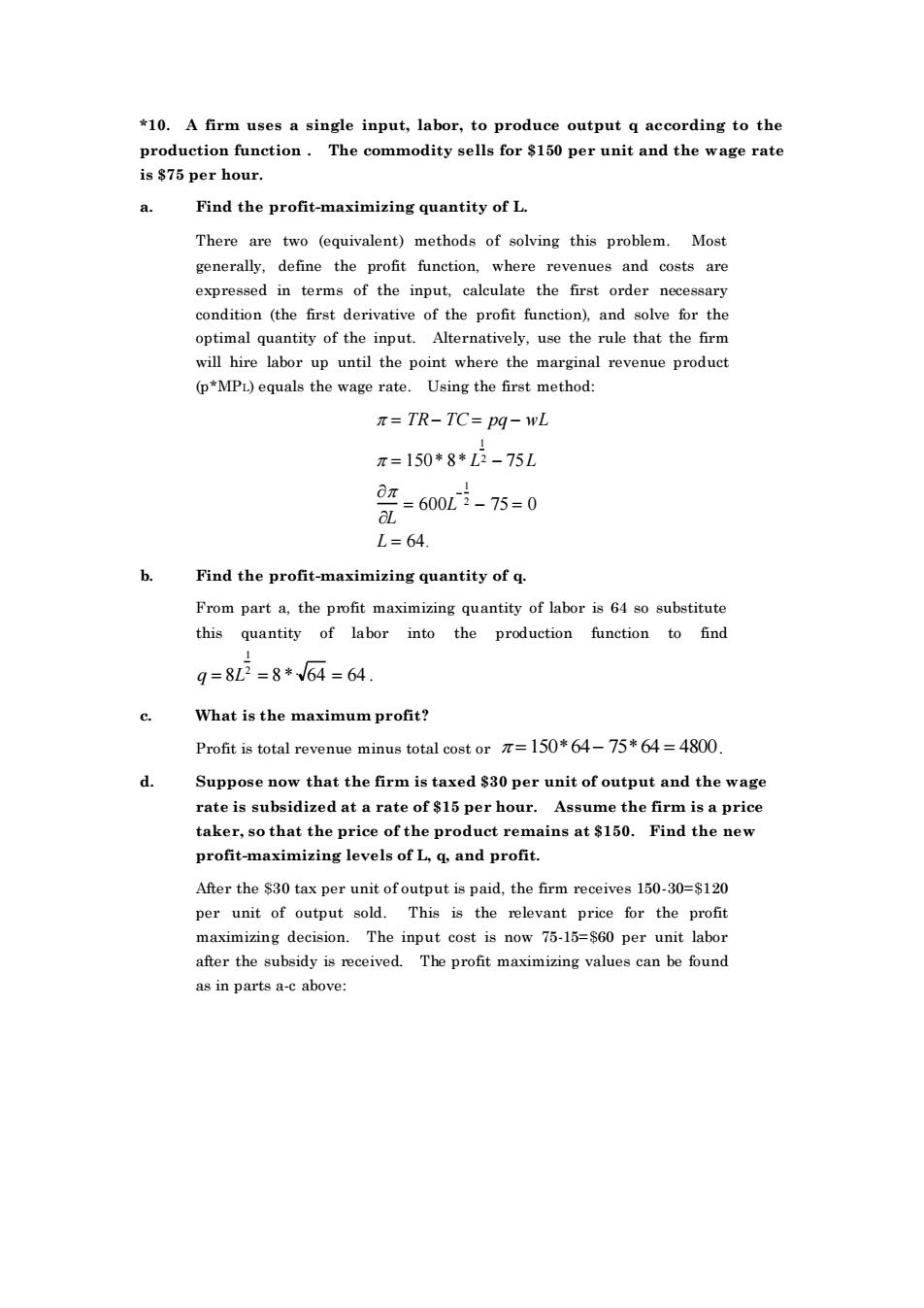正在加载图片...

*10.A firm uses a single input,labor,to produce output q according to the production function The commodity sells for $150 per unit and the wage rate is $75 per hour. Find the profit-maximizing quantity of L There are two (equivalent)methods of solving this problem.Most generally.define the profit function.where revenues and costs are expressed in terms of the input.calculate the first order necessary of the innut Alt rnatively. use the rule that the fir will hire labor up until the point where the marginal revenue product (p*MPL)equals the wage rate.Using the first method: π=TR-TC=pg-wL π=150*8*L2-751 瓷-60ad-5-0 L=64. Find the profit-maximizing quantity of q. From part a,the profit maximizing quantity of labor is 64 so substitute this quantity of labor into the production function to find g=82=8*6a=64. What is the maximum profit? Profit is total revenue minus total cost or =150*64-75*64=4800. Suppose now that the firm is taxed $30 per unit of output and the wage rate is subsidized at a rate of $15 per hour.Assume the firm is a price taker,so that the price of the product remains at $150.Find the new profit-maximizing levels of L q,and profit. After the $30 tax per unit of output is paid,the firm receives 150-30=$120 per unit of output sold.This is the relevant price for the profit maximizing decision.The input cost is now 75-15=60 per unit labor after the subsidy The profit maximizing values can be found as in parts a-c above:*10. A firm uses a single input, labor, to produce output q according to the production function . The commodity sells for $150 per unit and the wage rate is $75 per hour. a. Find the profit-maximizing quantity of L. There are two (equivalent) methods of solving this problem. Most generally, define the profit function, where revenues and costs are expressed in terms of the input, calculate the first order necessary condition (the first derivative of the profit function), and solve for the optimal quantity of the input. Alternatively, use the rule that the firm will hire labor up until the point where the marginal revenue product (p*MPL) equals the wage rate. Using the first method: = TR− TC = pq − wL = 150* 8* L 1 2 − 75L L = 600L − 1 2 − 75 = 0 L = 64. b. Find the profit-maximizing quantity of q. From part a, the profit maximizing quantity of labor is 64 so substitute this quantity of labor into the production function to find q = 8L 1 2 = 8 * 64 = 64 . c. What is the maximum profit? Profit is total revenue minus total cost or =150*64− 75*64 = 4800. d. Suppose now that the firm is taxed $30 per unit of output and the wage rate is subsidized at a rate of $15 per hour. Assume the firm is a price taker, so that the price of the product remains at $150. Find the new profit-maximizing levels of L, q, and profit. After the $30 tax per unit of output is paid, the firm receives 150-30=$120 per unit of output sold. This is the relevant price for the profit maximizing decision. The input cost is now 75-15=$60 per unit labor after the subsidy is received. The profit maximizing values can be found as in parts a-c above: